Bundle: Chemistry in Focus, Loose-leaf Version, 7th + OWLv2, 1 term (6 months) Printed Access Card
7th Edition
ISBN: 9781337812269
Author: Nivaldo J. Tro
Publisher: Cengage Learning
expand_more
expand_more
format_list_bulleted
Concept explainers
Textbook Question
Chapter 1, Problem 3SC
Water is put on the stove and heated with a natural gas burner. After some time, the water begins to bubble, and steam is given off. What kind of change has occurred?
a. physical
b. chemical
c. no change has occurred
Expert Solution & Answer
Want to see the full answer?
Check out a sample textbook solution
Students have asked these similar questions
Construct a molecular orbital diagram for carbon monoxide. Identify the relevant point group,include all of the appropriate symmetry labels and pictures, and fill in the electrons. Make sure toaccount for the difference in electronegativity between C and O. Hint: CO is substantiallyisoelectronic to N2. (PLEASE DRAW THE ENTIRE MO DIAGRAM!!!)
please help with hw
help me solve this hw
Chapter 1 Solutions
Bundle: Chemistry in Focus, Loose-leaf Version, 7th + OWLv2, 1 term (6 months) Printed Access Card
Ch. 1 - A chemist observes the behavior of a gas by...Ch. 1 - Classifying Matter Determine whether each of the...Ch. 1 - A cup of coffee is an example of: a. a liquid pure...Ch. 1 - Water is put on the stove and heated with a...Ch. 1 - The Conservation of Mass A match is weighed and...Ch. 1 - Constant Composition of Compounds Two samples of...Ch. 1 - Prob. 4SCCh. 1 - What is meant by the statement Macroscopic...Ch. 1 - Why should nonscience majors study science?Ch. 1 - Prob. 3E
Ch. 1 - Define chemistry.Ch. 1 - Prob. 5ECh. 1 - Prob. 6ECh. 1 - How are science and art similar? How are they...Ch. 1 - What is different about the Greek philosophers...Ch. 1 - Match each of the people in column A with their...Ch. 1 - What were the two main pursuits of alchemy? What...Ch. 1 - Prob. 11ECh. 1 - What is the difference between an element and a...Ch. 1 - What is the difference between a pure substance...Ch. 1 - What is the difference between a homogeneous...Ch. 1 - Explain the differences among a solid, a liquid,...Ch. 1 - Match each term in the left column with three...Ch. 1 - What is the atomic theory?Ch. 1 - Describe Rutherfords gold foil experiment.Ch. 1 - Describe the structure of the atom as explained by...Ch. 1 - What are black holes, and how does their existence...Ch. 1 - Classify each of the following as an observation...Ch. 1 - Classify each of the following as a law or a...Ch. 1 - To the best of your knowledge, classify each of...Ch. 1 - To the best of your knowledge, classify each of...Ch. 1 - Which substance is a liquid mixture? a. lemonade...Ch. 1 - Which substance is a solid? a. the helium in a...Ch. 1 - Classify each of the following properties as...Ch. 1 - Classify each of the following properties as...Ch. 1 - Classify each of the following changes as physical...Ch. 1 - Classify each of the following changes as physical...Ch. 1 - The burning of gasoline in automobile engines is a...Ch. 1 - A campfire is a chemical reaction involving wood...Ch. 1 - Prob. 33ECh. 1 - Prob. 34ECh. 1 - A chemist combines 22 grams of sodium with 28...Ch. 1 - A chemist combines 6 grams of hydrogen with 52...Ch. 1 - Several samples of carbon dioxide are obtained and...Ch. 1 - Several samples of methane gas, the primary...Ch. 1 - According to Rutherfords model of the atom, how...Ch. 1 - According to Rutherfords model of the atom, how...Ch. 1 - When water boils, small bubbles form in the...Ch. 1 - Prob. 42ECh. 1 - Prob. 43ECh. 1 - Prob. 44ECh. 1 - Prob. 45ECh. 1 - The nuclei of a limited number of atoms are...Ch. 1 - Prob. 47ECh. 1 - Based on the molecular views shown for each of the...Ch. 1 - Read The Molecular Revolution" box in this chapter...
Knowledge Booster
Learn more about
Need a deep-dive on the concept behind this application? Look no further. Learn more about this topic, chemistry and related others by exploring similar questions and additional content below.Similar questions
- Briefly explain chemical potential.arrow_forwardReason whether it is possible to determine changes in the Galvani potential difference at the metal-solution interface.arrow_forwardObtain the standard potential at 25°C of the Cu* I Cu | Pt electrode from the standard potentials E° Cu²+/Cu = 0.341 V and E Cu²+ /Cu+ = 0.153 V.arrow_forward
arrow_back_ios
SEE MORE QUESTIONS
arrow_forward_ios
Recommended textbooks for you
 World of Chemistry, 3rd editionChemistryISBN:9781133109655Author:Steven S. Zumdahl, Susan L. Zumdahl, Donald J. DeCostePublisher:Brooks / Cole / Cengage Learning
World of Chemistry, 3rd editionChemistryISBN:9781133109655Author:Steven S. Zumdahl, Susan L. Zumdahl, Donald J. DeCostePublisher:Brooks / Cole / Cengage Learning
 Chemistry & Chemical ReactivityChemistryISBN:9781337399074Author:John C. Kotz, Paul M. Treichel, John Townsend, David TreichelPublisher:Cengage Learning
Chemistry & Chemical ReactivityChemistryISBN:9781337399074Author:John C. Kotz, Paul M. Treichel, John Townsend, David TreichelPublisher:Cengage Learning World of ChemistryChemistryISBN:9780618562763Author:Steven S. ZumdahlPublisher:Houghton Mifflin College Div
World of ChemistryChemistryISBN:9780618562763Author:Steven S. ZumdahlPublisher:Houghton Mifflin College Div Introductory Chemistry: An Active Learning Approa...ChemistryISBN:9781305079250Author:Mark S. Cracolice, Ed PetersPublisher:Cengage Learning
Introductory Chemistry: An Active Learning Approa...ChemistryISBN:9781305079250Author:Mark S. Cracolice, Ed PetersPublisher:Cengage Learning

World of Chemistry, 3rd edition
Chemistry
ISBN:9781133109655
Author:Steven S. Zumdahl, Susan L. Zumdahl, Donald J. DeCoste
Publisher:Brooks / Cole / Cengage Learning


Chemistry & Chemical Reactivity
Chemistry
ISBN:9781337399074
Author:John C. Kotz, Paul M. Treichel, John Townsend, David Treichel
Publisher:Cengage Learning

World of Chemistry
Chemistry
ISBN:9780618562763
Author:Steven S. Zumdahl
Publisher:Houghton Mifflin College Div


Introductory Chemistry: An Active Learning Approa...
Chemistry
ISBN:9781305079250
Author:Mark S. Cracolice, Ed Peters
Publisher:Cengage Learning
Types of Matter: Elements, Compounds and Mixtures; Author: Professor Dave Explains;https://www.youtube.com/watch?v=dggHWvFJ8Xs;License: Standard YouTube License, CC-BY